Probably, Google Pixel 8 and Pixel 8 Pro became the main autumn event in the smartphone segment. The global giant continues to successfully improve the Samsung-made Google Tensor SoC-based Pixel series. As known, its development was carried out in collaboration with Samsung Semiconductor’s SLSI division.
According to Google, the developers mainly focused their efforts on increasing the AI & ML (machine learning) level. In turn, this progress should improve efficiency of algorithms for video, speech recognition, voice commands, translation, captioning, dictation, etc.
In 2021, Pixel 6 Pro became the first model with Google Tensor SoC.
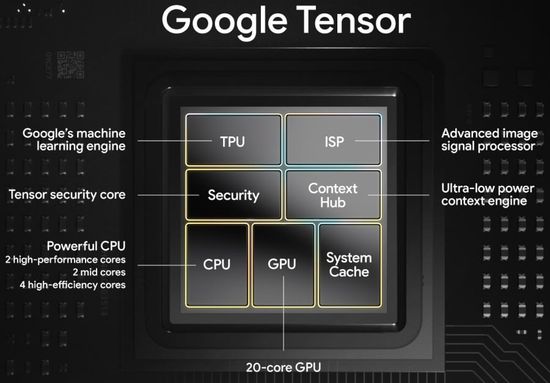
It alrady used the latest Google’s LaMDA language model for Google Assistant. In addition, Tensor SoC eliminated Google Pixel’s dependence on Qualcomm Snapdragon chipsets, expanding the giant’s capabilities in terms of software support and updates.
In two years, the company has demonstrated rapid development of this area, introducing Pixel 7 series with Google Tensor G2 in 2022, and the latest Pixel 8 / 8 Pro with Tensor 3rd gen in 2023. In addition, this year the company expanded the 7 series with a budget Google Pixel 7a with Tensor G2 starting at $ 350. Given the previous series, which includes the flagship 6 Pro and 7 Pro, Pixel 6 and 7, and budget 6a / 7a models, the 8 series could be may expanded with a budget 8a model in the future.
In addition to premium specs and features, the 8 Series offers an improved Tensor G3, Android 14 and an unprecedented 7 years of support for OS and security updates, and parts availability.
Google Tensor G3
Prices (Pixel 8 vs 8 Pro):
– 12GB + 128GB (RAM+internal memory) – $ 700 / € 800 vs $ 1,000 / € 1,100;
– 12GB + 256GB – $ 760 / € 860 vs $ 1,060 / € 1,160;
– -‘- + 512GB – no vs $ 1,180 / € 1,300;
– 12GB + 1TB – no vs $ 1,400.
Both versions have a Samsung-made 4nm 9-core Google Tensor G3 3rd gen chipset with Immortalis-G715s MC10 GPU, 10W TDP (Thermal Design Power defines the max heat dissipated) and 16GB LPDDR5X RAM.
Google Tensor 9-core G3 (10/15/2023) vs 8-core Tensor G2 (10/6/2022):
– 3 GHz vs 2.85 GHz;
– CPU architecture – 1x ARM Cortex-X3 / 3GHz + 4x ARM Cortex-A715 / 2.45GHz + 4x ARM Cortex-A510 / 2.15GHz vs 2x ARM Cortex-X1 / 2.85GHz + 2x ARM Cortex-A76 / 2.35GHz + 4x ARM Cortex-A55 / 2GHz;
– GPU – 10-core ARM Immortalis-G715 vs Mali-G710MP.
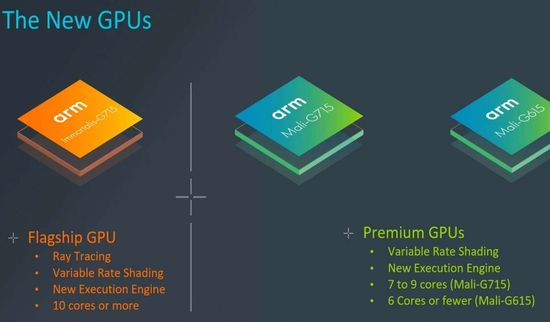
– Google modem vs g5300b modem;
– Upload Speed (faster Internet access) – 1500 Mbit/s vs 300 Mbit/s.
The test results are quite consistent with the improved specs (G3 vs G2):
– Antutu – 1178536 vs 808794 (~ 45%);
– Geekbench – 4029/1387 vs 3315/1087 (~ 21% / 27%);
– 3Dmark – 6657 vs 6398 (~ 4%);
– gaming (PUBG mobile) – 120 fps vs 60 fps.
Overall, the new Tensor G3 offers higher performance vs last year’s G2 in the Pixel 7/7 Pro, but it’s still inferior to its main competitors. However, with the exception of high-performance gaming, Pixel 8 is superb for day-to-day tasks, showing excellent results in non-synthetic benchmark scenarios.Unfortunately, previous Pixel models exhibited CPU throttling (reduction its frequency due to heating during prolonged high loads). The relevance of this problem for Pixel 8 is not yet known.
Pixel 8 vs 8 Pro
Both models use Android 14 OS, have WLAN (wireless local area network, Wi-Fi 802.11), NFC (near field communication), and Bluetooth 5.3. As known, this version supports A2DP (Advanced Audio Distribution Profile), LE (low power consumption) and aptX HD (24-bit Hi-Res audio format. Additionally, 8 Pro supports Ultra Wideband (UWB), which provides wireless communication over short distances with minimal power consumption.
Smartphones use fingerprint (under display, optical), accelerometer, gyro, proximity, compass and barometer sensors. Additionally, the 8 Pro has a thermal scanner, but it’s not yet certified and has limited accuracy.
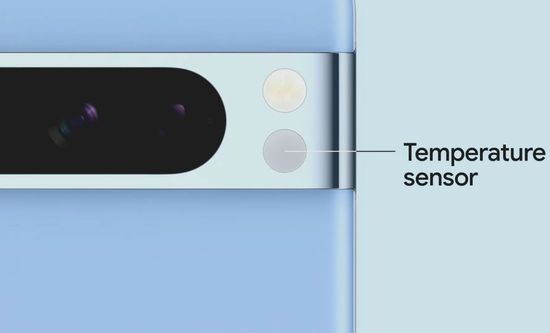
Specs
– size – 162.6 x 76.5 x 8.8 mm (6.40 x 3 x 0.35 in) vs 150.5 x 70.8 x 8.9 mm (5.93 x 2.79 x 0.35 in).
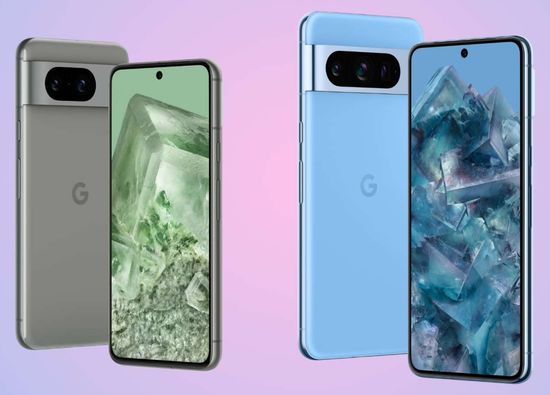
– weight- 213 g (7.51 oz) vs 187 g (6.60 oz);
– display- LTPO OLED, 120Hz, HDR10+, 1600 nits (2400 nits peak), 6.7″, 108.7 cm² (~87.4% screen-to-body ratio), (1,344 x 2,992) resolution, ~489 ppi density vs LTPO OLED, 120Hz, HDR10+, 1400 nits (2000 nits peak), 6.2″, 91.1 cm² (~85.5% screen-to-body ratio), (1,080 x 2,400) resolution, ~428 ppi density.
For reference, LTPO (Low Temperature Polycrystalline Oxide) is a new technology in OLED displays with dynamic refresh rate control to improve energy efficiency;
– memory – 128GB/256GB/512GB/1TB & 12GB RAM vs 128GB/256GB & 8GB RAM (UFS 3.1);
– glass front/back – Gorilla Glass Victus 2 vs Victus:
– denser – 2.41g/cm³ vs 2.40cm³;
– ‘scratch threshold’ – 8-10 N vs 7-10 N;
– resistance to hydrochloric acid solution – 3.6mg/cm² vs 49,9mg/cm² in 24 hours;
– ‘fracture toughness’ – 0.82 MPa/m vs 0.76 MPa/m (for comparison, Gorilla Glass 2 has 0.68).
Cameras and batteries
All cameras support 4K@60fps video recording, Night Sight (multi-frame-merging HDR+ mode) and Cinematic Blur (video recording mode with blurred background).

In addition, they have Dual-LED flash, Pixel Shift, Ultra-HDR, Best Take, panorama, gyro-EIS, 10-bit HDR and OIS features. The models also share the same 10.5MP, f/2.2, 20mm (ultra-wide), 1/3.1-inch, 1.22µm single selfie camera with Auto-HDR and panorama features.
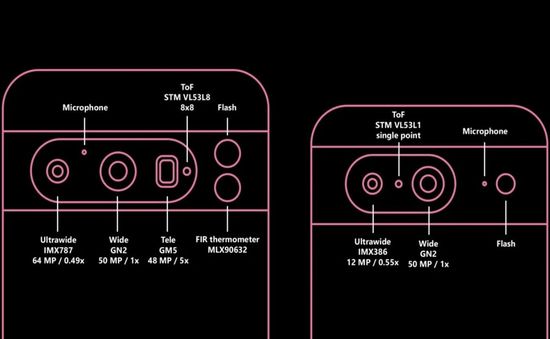
8 Pro camera (triple):
– 50 MP, f/1.7, 25mm (wide), 1/1.31″, 1.2µm, dual pixel PDAF, multi-zone Laser AF, OIS;
– 48 MP, f/2.8, 113mm (telephoto), 1/2.55″, 0.7µm, dual pixel PDAF, OIS, 5x optical zoom;
– 48 MP, f/2.0, 126˚ (ultrawide), 0.8µm, dual pixel PDAF.
Pixel 8 camera (dual):
– 50 MP, f/1.7, 25mm (wide), 1/1.31″, 1.2µm, dual pixel PDAF, Laser AF, OIS;
– 12 MP, f/2.2, 126˚ (ultrawide), 1/2.9″, 1.25µm, AF.
Models use non-removable Li-Ion 5050 mAh and 4575 mAh batteries with reverse wireless:
– 30W wired, PD3.0, PPS, 50% in 30 min, 23W wireless vs 27W wired, PD3.0, PPS, 50% in 30 min, 18W wireless.
New Pixel 8 Pro and 8 provide 25:24h/10:34h/12:18h/7:03h (phone call/web surfing/playback/gaming) and 22:36h/9:55h/13:56h/7:09h.
For comparison, the main competitors offer:
– Samsung Galaxy S23 Ultra (5000 mAh) – 39:23h/10:51h/15:47h/8:44h;
– Apple iPhone 15 Pro Max (4441 mAh) – 25:05h/14:16h/22:36h/9:56h.
As known, pre-loaded OS on Pixel phones comes with some exclusive features only for Pixel users. Therefore, long-term support is an important bonus of this family. Pixel 8 / 8 Pro are no exception. They have Google’s commitment to update the OS and security for the next 7 years. Thus, theoretically, the Pixel 8 and Pixel 8 Pro models will be able to go from Android 14 to Android 21. Moreover, Google also promises the spare parts for its phones for the same period.
AI-based features
Like their predecessors, the Pixel 8 / 8 Pro offer many smart features. This list includes, for example, call screening, real-time translation and a superb image editing toolset with improved NPU (Neural Processing Unit). In fact, it accelerates AI-related tasks. But some options require internet connection for Google’s cloud computing.
Android 14 UI design is almost identical to Android 13. The additional list in the notification shade is the only significant difference. It’s designed for apps running in the background and can be used to optimize battery life. Also Google has significantly expanded the UI settings. In addition, the new version offers additional features such as image creation, region and language selection, background application management, etc. Privacy and security are also improved. Finally, lossless streaming for wired headphones and 10-bit HDR image processing round out its list of improvements.
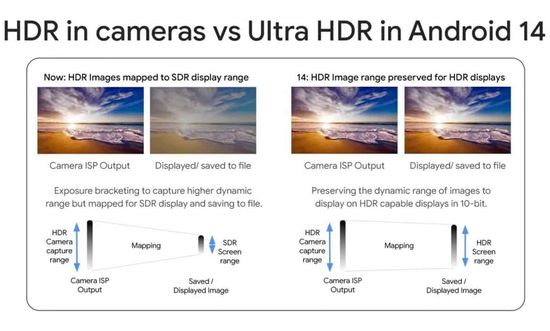
New NPU supports real-time system-level Live Translate. Probably, interpreter mode can be positioned as one of its most significant improvements.
Features:
– Call screening.
Google Assistant accepts a call, understand the context of the conversation and offer quick responses. It can also be used to select options from a menu with the pad;
– built-in function of the audio recorder app can transcribe conversation with speaker tags, which can be very convenient, for example, for journalists;
– text and image extraction ‘on the go’ can copy, share or select text from the screen. In Chrome, Google Assistant can edit the structure of an article;
– Google Photos offers new Magic Editor button with advanced editing features (remove / move objects, change background, etc). In fact, it’s AI Photoshop.

Main competitors
Considering prices, specs and functionality, Google’s flagship mainly competes with the Samsung Galaxy S23 Ultra and iPhone 15 Pro Max.
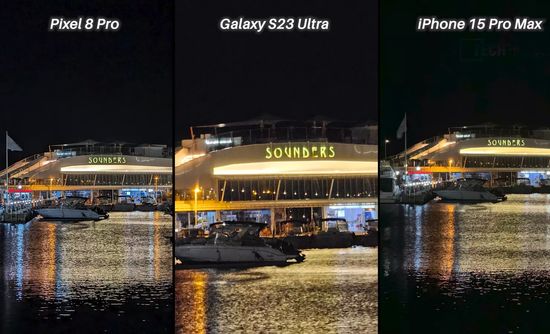
The list of Galaxy’s bonuses includes a unique S Pen and the best battery life. But Pixel 8 Pro offers unique features and the longest software support in the industry.
The iPhone 15 Pro Max provides superb video quality and longer battery life, but it’s ~$ 200 / € 350 more expensive. In particular, 8 Pro vs iPhone 15 Pro Max:
-12GB + 256GB (RAM+internal memory) – $ 1,060 / € 1,160 vs $ 1,200 / € 1,450;
–‘-+ 512GB – $ 1,180 / € 1,300 vs $ 1,400 / € 1,700;
-12GB + 1TB – $ 1,400 vs $ 1,600 / € 1,950.
However, this list may be expanded to include OnePlus 11, Xiaomi 13 Pro or Sony Xperia 1 V.
The Pixel 8 competes primarily with Apple’s iPhone 15 and Samsung’s Galaxy S23.
Unlike the 60Hz iPhone with 5 years of support cycle, the Pixel 8 offers a 120Hz refresh rate, faster charging, has a bigger sensor in main camera, and promises 7 years of full software support. CPUs performance, Pros & Cons their shooting are quite comparable.
The Samsung has a dedicated 3x telephoto camera, longer battery life, and a more powerful chipset. But Pixel 8 offers more powerful camera and proprietary Android 14 version with 7 years of full software support and more timely updates.
However, this list may also include Asus Zenfone 10 (faster 144Hz display and a more powerful chip), and the Xiaomi 13 (Dolby Vision support and a much more powerful Snapdragon 8 Gen 2). But in general, the price-quality ratio of the world giant’s product seems preferable.
Conclusion
Pros
– newest 9-core Tensor G3;
– perfectly rounded ends and superb surface texture;
– flat screen;
– very bright display, adaptive refresh rate, high resolution and color accuracy;
– pure Android 14 with exclusive features and 7 years of software support;
– traditionally excellent cameras;
– termal scanner in 8 Pro.
Cons
– average battery life;
– CPU throttling (unknown yet);
– exclusive software features are limited for some regions.
Premium specs, pure Android 14, improved Tensor G3 and an unprecedented promise of support for OS and security for 7 years are very strong arguments in favor of the new Pixel. In turn, superb value for money creates cloudless marketing prospects, promising them a place among bestsellers.
Of course, Samsung Galaxy S23 Ultra and Apple iPhone 15 Pro Max are also superb. But Google has additional bonuses. The consumer value of smart functionality in modern consumer electronics is constantly increasing. But increasing the algorithms efficiency requires increasing AI & ML performance, which gives the Tensor G3 an advantage. In addition, Android claims dominance among smart platforms. For example, Tisen and WebOS, etc in TVs are convenient and fast, but they are clearly inferior to Android/Google TV in popularity and distribution.
The comparison between the Pixel 8 and 8 Pro is contrarian. Probably the larger screen and additional camera are quite adequate for the ~$ 250/€ 300 difference. But the main bonuses of the models (Tensor G3, ‘pure’ Android 14, etc) are identical. Therefore, the value for money of Pixel 8 seems best. But this aspect mainly depends on the budget.
This video presents the Google Pixel 8 and 8 Pro.